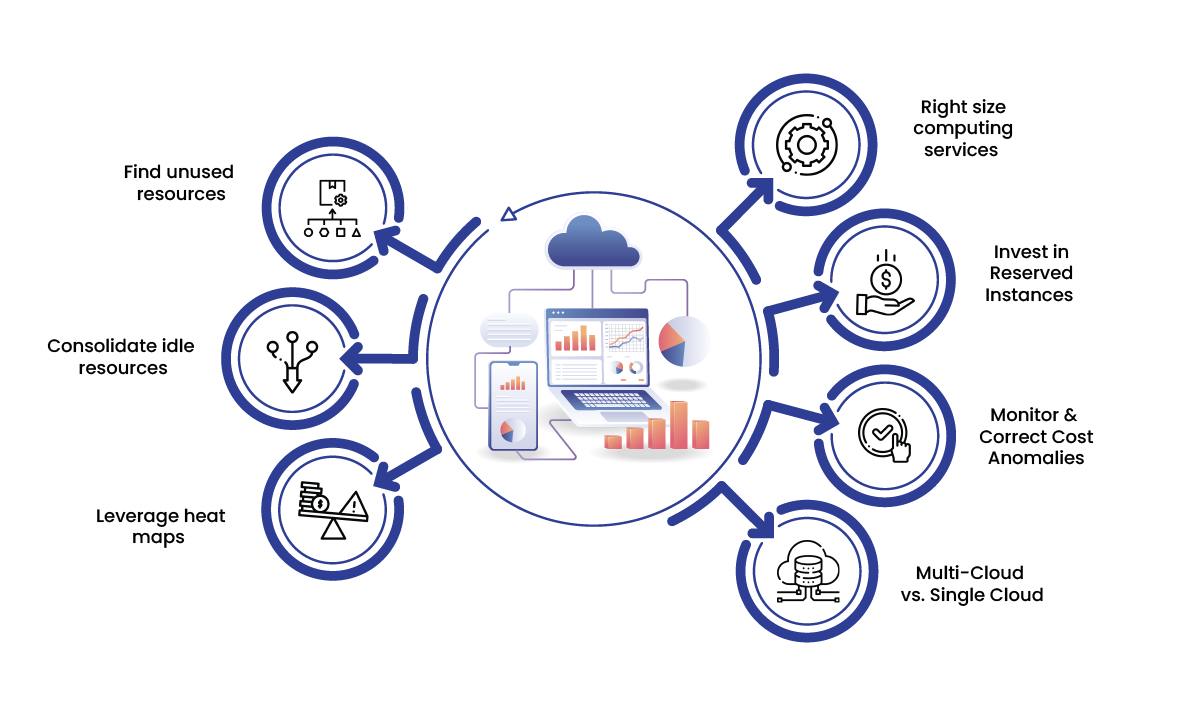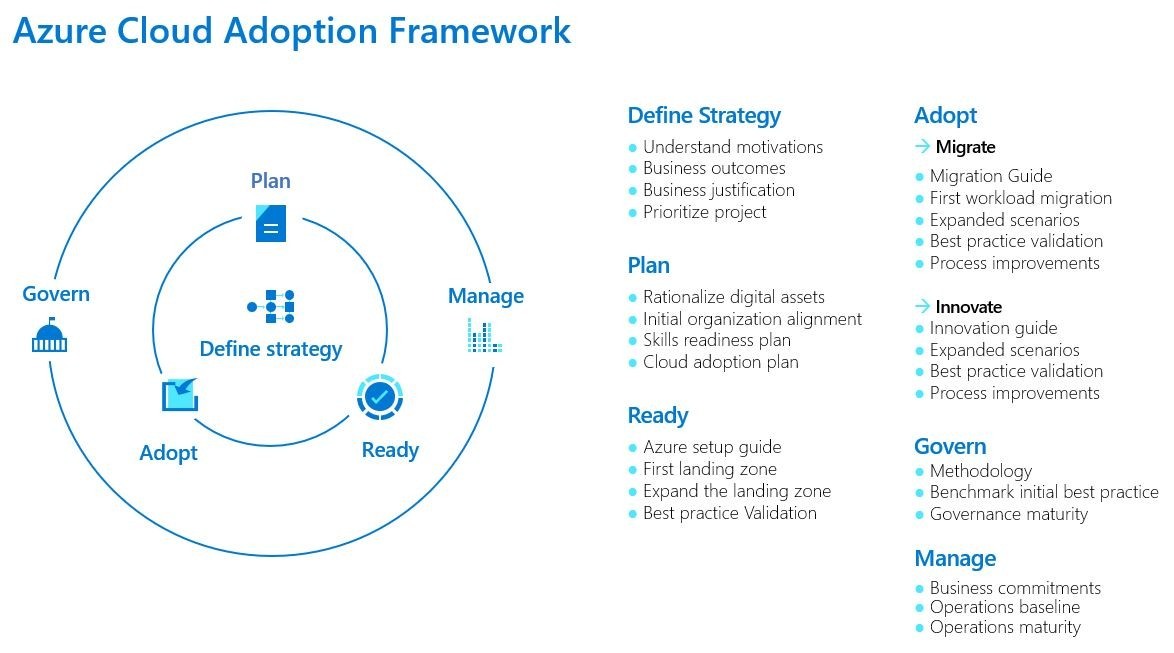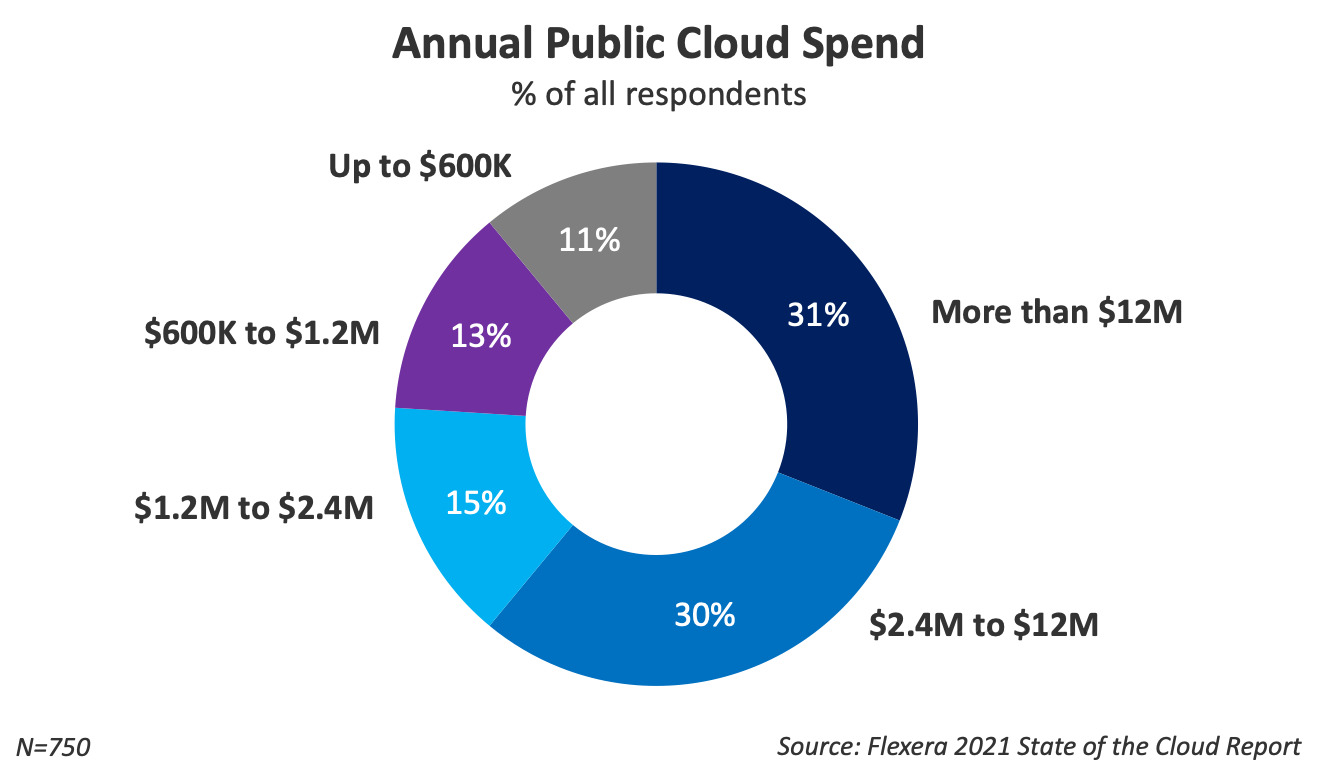7 Effective Cloud Cost Optimization Strategies That Cut Your Spendings
After migrating to the cloud, many organizations realize the benefits of scalability, flexibility, and availability. But sometimes, a company may experience operational inefficiencies that cost dearly. Unfortunately, too many IT teams are so eager to migrate to the cloud that they forget what it's for in the first place. Often this is due to the inconsistency of their actions with a long-term strategy. To ensure success after moving to the cloud and keep costs under control, you must always be guided by business strategy.
Indeed, cost optimization is a never-ending and evolutionary process of improvements throughout the life cycle of IT systems. The tips below are for optimizing their use of the cloud and keeping costs as low as possible.
What is Cloud Optimization?
First, if the cloud supports clustering, then, being placed in a virtual infrastructure, it becomes a link in the chain of capacity savings and, consequently, the budget for ongoing maintenance (and, in some cases, the start-up budget).
Secondly, a cloud clustered on different physical servers (or virtual servers hosted on different physical servers) greatly increases fault tolerance. Especially if the servers are periodically backed up and a server in stock can be "raised" in case of an emergency with one of the main servers.
Thirdly, the cloud allows you to save on maintenance personnel to some extent - it is obvious that it is much easier to maintain one or two physical servers. And this is without touching on the possible savings on the time of business operations. But this is a separate and rather difficult conversation because the cloud, like any business application, carries certain business ideas and pursues certain business goals. And the goal of "reducing the operation time" may not be the main one. (Practice shows that the usual goal is to streamline the process, and only in second or third place is such a parameter as reducing the time of operations.) enterprise - and global - that is, to ensure employee functioning from anywhere on the Internet. By and large, this in a certain way affects the economic model, again through the time of operations, maintaining up-to-date information, etc. All this is important and relevant when setting a business task, but IT, as a rule, looks a little narrower - through the prism of the current and prospective IT budget, which, by the way, can be a certain problem, and the CIO must be able to live in two dimensions - IT and business. Otherwise, there will be a classic picture of mutual misunderstanding between IT and business.

What follows from this? The general conclusion is simple: clouds are a promising model from all points of view that can and should be used. Because with the right approach, the cloud can solve several problems at once: from savings to optimization.
Cloud Cost Optimization Strategies
Cloud technologies provide us instant access to the necessary data and flexibility in building and optimizing business processes. But you have to pay for everything. Since vendors also have instant access to your data and licenses, compliance with licensing rules becomes paramount. It's easy to lose control of your spending in the cloud, and that's where Software Asset Management (SAM) comes in.
4 Software Usage Types to Monitor in the Cloud
What foods are in the cloud salad bar? Software as a Service or Software-as-a-Service/SaaS, Platform as a Service or Platform-as-a-Service/PaaS, Infrastructure as a Service or Infrastructure-as-a-Service/IaaS and Hybrid Cloud or Hybrid Cloud.
SaaS is a browser-based application that you use to complete your daily tasks. You log in to the vendor's website and use the software remotely hosted and maintained by the manufacturer. PaaS is the environment where you run custom applications. You don't need to configure and maintain the underlying platform, the vendor does.
IaaS is an operating system environment with virtual servers and raw/unconfigured computing power. You rent servers outside the office and monitor them using applications. Just like the ones in the office.
Hybrid Cloud combines SaaS and software installations within a corporate network. Some hybrid solutions use subscription licensing, others are organized as a cloud-based workspace.

How to Cut Costs in the Cloud for SaaS, PaaS, IaaS and Hybrid Cloud
All four types of software use are paid based on the use volume. So you see real-time costs right away. The problem is to collect data in one place and get an objective picture of the consumption of cloud solutions. If you return to the salad bar example, you need to see the weight of boiled eggs and Caesar salad immediately. Example: 1 boiled egg weighs 30 grams, and one spoon of Caesar salad weighs 24 grams. Then you realize you can take two boiled eggs and ten spoons of Caesar on an $8 budget.
SAM can help you predict cloud software usage, calculate long-term demand for solutions, and implement cloud cost management.
How to Cut Costs in the Cloud on Salesforce
SalesForce is designed to increase your revenue. The solution includes CRM functions, so you constantly contact customers. And you can quickly and efficiently meet their needs. But if you constantly overpay for SalesForce licenses, it hurts the company's profits.
Optimize your investment in SalesForce with LicenseControl:
- Manage company accounts;
- Control software usage by all SalesForce Orgs;
- Control license costs;
- Make informed and profitable buying and contracting decisions.
How to Reduce the Cost of Software of Any Vendor in the Cloud
You need accurate and up-to-date data from multiple sources to reduce your software and license costs significantly.
This requires connecting specialized tools that monitor the use of cloud solutions and export data from cloud portals. But traditional discovery tools, including HPUD, SCCM, and BigFix, cannot monitor or export data from cloud services. Use the USU LIMA license management platform (formerly Aspera SmartTrack):
- Get data directly from every cloud monitoring tool, including Amazon CloudWatch and Google StackDriver;
- Export the user data you need from SaaS solutions, including Microsoft 365, WebEx, and SalesForce, using the REST/Representational State Transfer API protocols.
How to Cut Costs on Microsoft 365 in the Cloud
Microsoft 365 helps your company run efficiently. But that doesn't mean you have to pay extra for it. Get rid of unnecessary subscriptions and redistribute unused permissions with LicenseControl:
- Optimize the number and types of subscriptions by analyzing software usage and types of installed applications;
- Synchronize purchases with user needs;
- Sign profitable contracts and maximize your return on investment.
Use Horizontal Scaling and Define Rules
In the cloud, monitoring bandwidth, network, and processing power is critical because spikes in traffic or resource usage can easily go beyond or create delays as they approach. To always have the power you need, scale your applications horizontally rather than vertically first. This approach uses any extra capacity in your environment before allocating more. In addition to horizontal scaling, set rules for performance and spikes. This will not only help make your cloud environment elastic. The rules will also serve as guidelines for the policies used in the organization. In addition, you should be able to send out notifications when spending is close to the limit. Many third-party vendors provide this capability on their SaaS platforms. In the long run, it is very useful to have visibility and the ability to take action when needed.

Use Multiple Storage Tiers
Billing in the cloud can be very complex. At first glance, it seems simple. But the more you use the cloud and infrastructure across multiple regions, bringing together products and solutions to achieve company goals, the more difficult it becomes to keep track of everything. The cloud provides multiple storage options to help simplify billing and save on rarely used assets. Objects, blocks or files can be stored. Every application requires an adequate solution. Therefore, use storage tiers and group applications based on the type of storage required by each application's goals and strategy. This will not only optimize your IT budget in the long run but also redirect resources as needed.
Reduce Technical Backlog
Many IT departments are moving to the cloud to "get rid" of data centers, which are becoming increasingly difficult to maintain in an era when the fastest and agile companies win. In the cloud, companies can get much higher performance and more features than in a typical data center. But to reap these benefits of the cloud, companies need to close the technical gap. Otherwise, they will have to serve both the cloud environment and their own existing infrastructure.
You can reduce the technical gap by applying cloud first, which does not mean cloud only, to all current IT investments. IT decisions should always be in line with a long-term strategy. If some applications are not well suited for the cloud, it is important to integrate them with the cloud to achieve high performance and security.
One of the promising areas of consolidation is to reduce the number of suppliers. Each of them having access to your sensitive information poses an additional threat. Choosing a strategic service provider is worth considering, as this type of provider will not only consolidate all the technology under one roof but will put your long-term strategy above all else.
Cloud Optimization Case Study
Most of our projects are Saas products, so we regularly encounter cloud optimization. For example, on our project, which is a child product of Ardas marketing automation SaaS tools, we used several strategies.
Bigdata and High-Load Servers
The project is very high-load, as it sends about 1,000,000,000 messages per month. Accordingly, a bug date was developed for this using SQL technologies. All data is hosted on Amazon. Also, for this project, a microservice architecture was developed, consisting of more than seventy microservices. Big data is used to store data such as contact bases, configurations of marketing strategies, and to collect all the events that occur when the user performs some action with emails.

High-speed Performance
The client provides services for many customers. The system serves mainly large companies, so we technically ensured a high sending speed. Also, it allows personalizing sending for certain segments. When customers migrate between segments, the type, frequency, and time of sending will change and adapt based on their behavior.

How Ardas Can Help You To Optimize Your Cloud Costs?
In this article, we looked at 7 sources of increased costs and showed how to close them. But to systematically cut costs in the cloud, you need cloud cost optimization strategies.
The cost reduction strategy in the cloud includes the implementation of SAM tools and technologies and the alignment of processes and practices within the company. Use the free guide to SAM and SaaS or Software as a Service - new horizons for the future of business processes to build your strategy to reduce costs in the cloud.
If you are looking for a reliable partner and experienced provider/integrator of cloud optimization services, please contact us. Ardas experts will help you normalize a complex cloud environment and determine the real demand for licenses.
